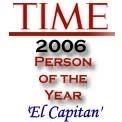Tuesday, July 31, 2007
Building the Iraqi Air Force
Sunday I attended a very interesting meeting. It was a meeting I didn’t want to attend. I was supposed to have flown down to Baghdad Airport the day prior to receive a shipment of 6 newly modified Huey II helicopters for the Iraqi Air Force. But at the last minute my Commander wanted me to stay behind and help with this meeting.
The meeting was to help decide future aircraft and capabilities of the Iraqi Air Force. In attendance was the Chief of Staff of the Iraqi Air Force, and nearly all of his top Generals and advisors. It was important, and it had everything to do with what my job is here with CAFTT. We’re rebuilding, and building up, the Iraqi Air Force. The once great, 900 aircraft, 2000 pilot force was reduced to nothing in 1991, and what was left was reduced even further in 2003. I can’t say they were starting from scratch though. There are veterans.
The Generals are all veterans of the old Iraqi Air Force. At some point most were exiled or imprisoned by Saddam during the Iran/Iraq War, or after 1991. All are experienced Officers, but most had only obtained the rank of Major or Colonel before we came along. Now we’re teaching the how to be Generals, which surprisingly is a tough thing to do. These guys still want to get down into the weeds and make all of the small decisions that need to be made, but they need to learn how to delegate those day-to-day decisions to their subordinates. Delegation and responsibility; two things that were beaten out of these men years ago, but essential to the General Officer corps today.
I had to pleasure of spending the first day with a General and his Colonel, LtCol, and Major. The General looked like a movie star in his flight suite. Like ‘Omar Sharif’ from Hidalgo. We were joking with him that he had the best mustache in Iraq. It wasn’t a lie, but Generals do like that sort of attention.
His LtCol and Squadron Commander for their helicopter base was one of the best leaders and people I’ve met since coming here. Our youngest daughters are very much little Daddy’s Girls, and love to mimic us, something we were both bragging about. Discussing family and children has a way of building bridges in this culture when you only have days instead of years to build those ties. During lunch, he summed up any premature pullout by US forces more succinctly than anyone else has back home.
“When you teach a baby how to walk, you start on a level surface and hold its hand. Once it builds enough strength, the child begins taking baby steps, but it’s still wobbly and needs assistance. Iraq is that baby, and the US is teaching it how to walk. If we let go too soon, it would be like setting a baby on a staircase and telling it to walk. We need to give Iraq time to build strong legs before it can climb those stairs on its own.”
The Iraqi Major I spoke to is the lead Engineer on their base. Another brilliant and young individual. I wish I could have talked with these two more. I was learning more from them in one day than I typically do with leaders back home.
At the end of the first day I stood on the Helicopter landing zone with them, waiting for their Iraqi Air Force Huey IIs to come and pick them up. That was the first time I had been caught outside during a mortar attack, and it showed by how I reacted. I was more intent on listening to the way the mortars sounded in flight than taking cover. Of course after the first of the seven mortars hit I snapped out of it and headed to the closest bunker with the Iraqis. Yet another great way to build bridges with the Iraqi AF leadership; share a bunker with them while rounds are falling around you. We just sat there and listened for anything that sounded like it was going to fall too close. Nothing did, but that sound is something I’ll never forget.
The Huey II helicopter is a great aircraft, and it’s serving the Iraqis well. They’re a great platform for Counterinsurgency Operations, and as the fleet grows they’ll be shuttling Iraqi Army and Special Forces troops directly into the battle. We proved their value in Vietnam, and the Iraqis are taking full advantage of that experience.
After the second day of the meeting, the right decisions were made by the right people, and the Iraqi Air Force will soon be growing in numbers and capability to support the Iraqi Army. The meeting was essential in that it brought everyone to the table to discuss their future as opposed to one person making those decisions for everyone else. Progress.
There are still many more issues to overcome, and many more lessons to be learned by the Iraqi Air Force, but we need to applaud the victories whenever they happen.
I love my job here. I miss my family, I hate the danger, I despise the incoming fire, and I fear the next car bomb that will bring carnage and death, but I love what I’m doing here. Years ago, had anyone told me I would be sitting in downtown Baghdad helping to rebuild the Iraqi Air Force I would have said they needed serious professional help.
On a side note, we’ve been in Iraq for over 4 years now, yet the current thrust by the US Air Force to rebuild the Iraqi Air Force has just recently picked up steam. From everything I’ve been able to read, responsibility for rebuilding the IqAF was with the U.S. Army. The Army has been responsible for building an Air Force, which explains why the IqAF is years behind schedule.
I was amazed to learn that the US Army doesn’t consider Air Power as an effective tool in Counterinsurgency Operations. In their COIN manual, air power is relegated to bombs on target and heavy lifting. They’ve all but ignored the historical impact of providing close air support, air cover, air mobility, and air superiority over the battlefield, most of which they learned back in World War II.
It’s understandable why there is such a focus on building an effective Iraqi Army. It’s amazing though that whenever the US and Iraqi forces needed help they picked up a radio and called their brothers from above to bring the steel. Close Air Support has been so readily available in this war, the Army took it for granted. They never looked far enough ahead to realize that the Iraqi Army, when operating independently, is going to need Close Air Support.
This oversight is not just the fault of the Army. The Air Force is just as guilty for allowing this to happen and for not jumping in early on to take the lead. Because of this lack of foresight on both sides, the IqAF is not where it should be. That’s where we come in. The Coalition Air Force Transition Team’s (CAFTT) motto is ‘Get ‘em In The Air!’, and that’s what we’re doing. We’re training Pilots, Airmen, Maintenance Technicians, Load Masters, Acquisition Officers, Air Traffic Controllers, and Generals to fly, fuel, fix, buy, and lead the Iraqi Air Force in support of their Army and their nation.
We’re getting them in the air, and making them a better Air Force than they were before.
Just give us the time to do it right.
posted by El Capitan at 4:26 AM
![]()
3 Comments:
Glad to hear you're doing well and so much progress is being made. Keep up the good work!
11:07 AMIf I had the authority, y'all would have all the time you need. I surely do hope you get it.
7:54 PMGreat Report!
Is any one coming to the US to train? I read a book, "Saddams Secrets" by a former Iraqi AF General Georges Sada. He trained in the USSR and the USA. These officers sound alot like him. working for a safe, peaceful, independent future for Iraq.






